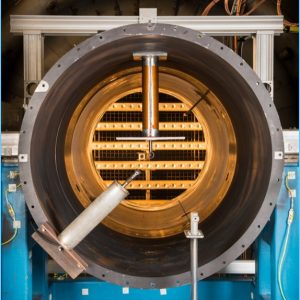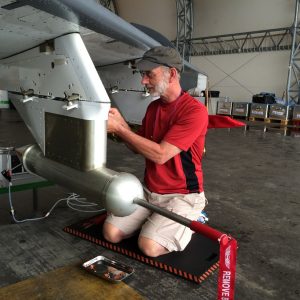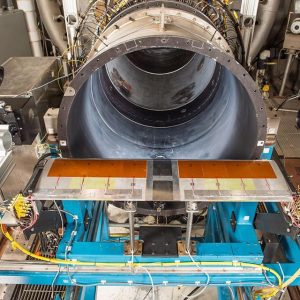Engine Icing
NASA has been performing experimental efforts aimed at providing datasets that can be used to generate models to predict the ice accretion inside current and future engine designs.

Ice crystals found at high altitude near convective clouds are known to cause jet engine power-loss events. These events occur due to ice crystals entering a propulsion system’s core flowpath and accreting ice resulting in events such as un-commanded loss of thrust (rollback), engine stall, surge, and damage due to ice shedding. NASA has been conducting research as part of a community with a growing need to understand the underlying physics of ice crystal icing. These activities have been conducted internal to NASA and through collaboration efforts with industry, academia, and other government agencies. A technical plan has been developed outlining NASA’s involvement with ice crystal icing (ICI) research. This plan highlighted three research areas of focus in which NASA has unique capabilities, experience, and expertise: Flight Characterization of the High Ice Water Content (HIWC) environment; Classical Research in the area of altitude testing for engine, engine components, and fundamental studies of ice particle aero-thermodynamics; and Computational research to simulate engine performance, ice accretion, and engine control methods.

The engine icing research work is conducted as part of the mission of NASA’s Advanced Air Vehicle Program’s (AAVP) Advanced Air Transport Technology (AATT) Project. Both airframe and engine icing work resides under AATT’s Advanced Aircraft Icing (AAI) subproject. The goal of the AAI subproject is to develop Experimentally validated analytical tools to assess N+2/N+3 Airframes and Engines to quantify these risks and offer prediction methodologies to be available to the aviation community to aid industry design and certification activities. Additionally, under AAVP, the Aeronautics Evaluation and Test Capabilities (AETC) project has invested in a five year effort to ensure advancement in NASA’s ground based altitude icing simulation capability in the Propulsion Systems Laboratory (PSL).
View moreabout the Advanced Air Vehicle Program.

